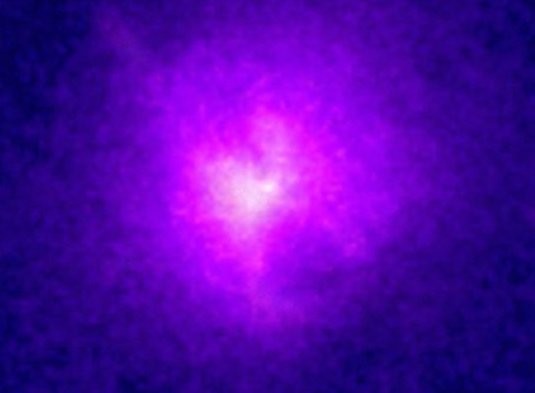Explanation: The Hydra A galaxy cluster is really big. In fact, such clusters of galaxies are the largest gravitationally bound objects in the Universe. But individual galaxies are too cool to be recorded in this false-color Chandra Observatory X-ray image which shows only the 40 million degree gas that permeates the Hydra A cluster. Astronomers have discovered that such X-ray hot gas clouds, millions of light-years across, are common in galaxy clusters. They expected the gas to be cooling and smoothly flowing into the clusters' central regions to form new galaxies and stars. Instead, the Chandra image shows details around the X-ray bright cluster core which suggest that magnetic fields and explosive events disturb the flow, deflecting the gas into loops and long structures and possibly inhibiting the formation of more cluster galaxies and stars.
1999 2000 2001 2002 2003 2004 2005 2006 2007 2008 2009 2010 2011 2012 2013 2014 2015 2016 2017 2018 2019 2020 2021 2022 2023 2024 2025 |
Yanvar' Fevral' Mart Aprel' Mai Iyun' Iyul' Avgust Sentyabr' Oktyabr' Noyabr' Dekabr' |
NASA Web Site Statements, Warnings, and Disclaimers
NASA Official: Jay Norris. Specific rights apply.
A service of: LHEA at NASA / GSFC
& Michigan Tech. U.
|
Publikacii s klyuchevymi slovami:
galaxy cluster - hot gas - Hydra A - Gidra - Skoplenie galaktik - goryachii gaz - goryachii mezhgalakticheskii gaz - rentgenovskoe izluchenie - rentgenovskie luchi
Publikacii so slovami: galaxy cluster - hot gas - Hydra A - Gidra - Skoplenie galaktik - goryachii gaz - goryachii mezhgalakticheskii gaz - rentgenovskoe izluchenie - rentgenovskie luchi | |
Sm. takzhe:
Vse publikacii na tu zhe temu >> | |
